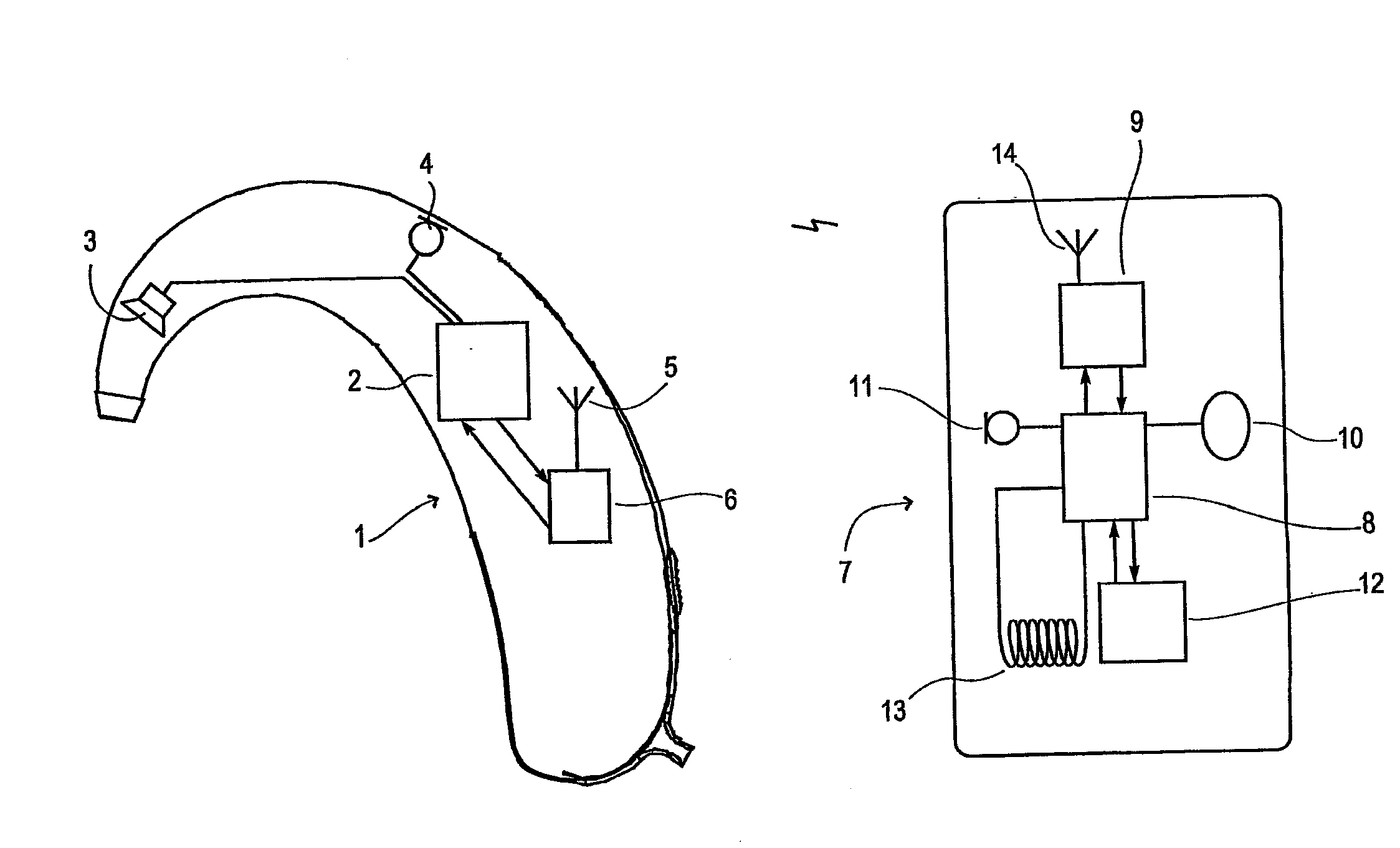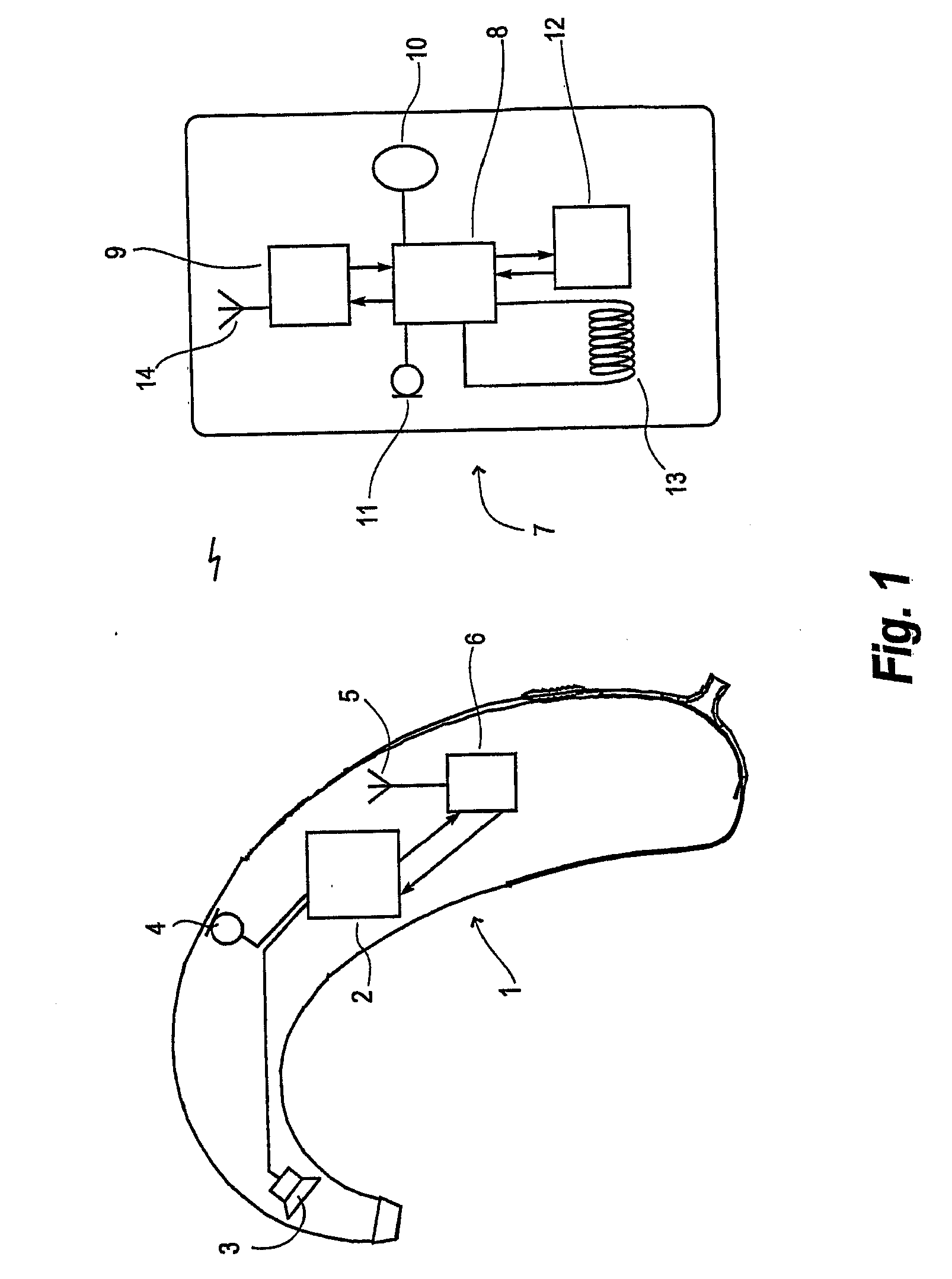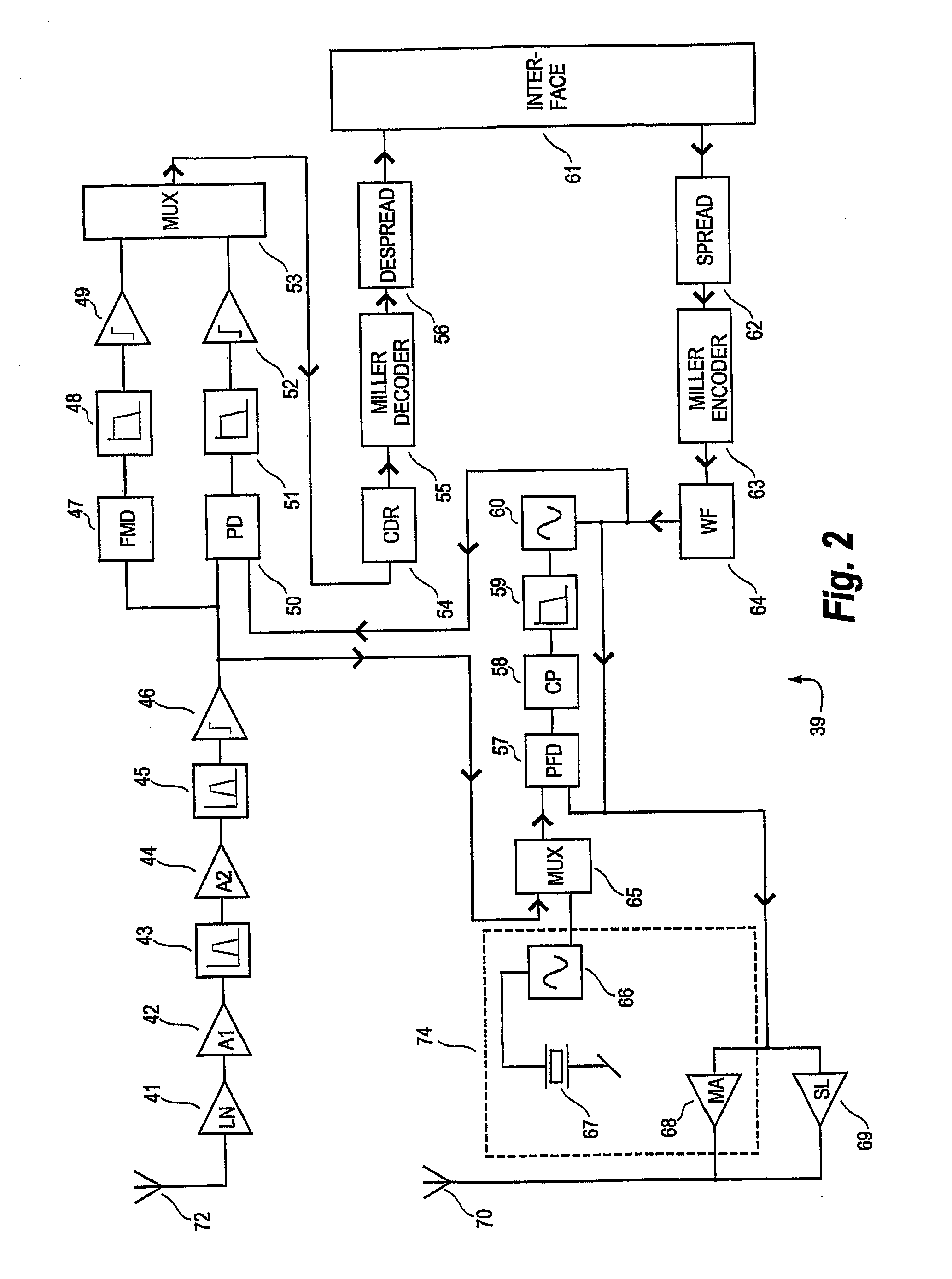Apparatus and method for operating a hearing aid
a hearing aid and apparatus technology, applied in the field of hearing aids, can solve the problems of not being able to transmit information from the hearing aid, complicated design and manufacture of the connector sockets adding significantly to the bulk of the hearing aid, so as to achieve little or no interference problems, power consumption and battery life are at a premium, and power consumption is low
- Summary
- Abstract
- Description
- Claims
- Application Information
AI Technical Summary
Benefits of technology
Problems solved by technology
Method used
Image
Examples
Embodiment Construction
[0054]FIG. 1 shows a hearing aid 1 placed in proximity of a portable module 7 according to an embodiment of the invention. The hearing aid 1 comprises a hearing aid processor 2 connected to a microphone 4 and a first transceiver 6. The hearing aid processor 2 is further connected to an output transducer 3. The first transceiver 6 is connected to a first antenna 5. The portable module 7 comprises a second processor 8 connected to a second transceiver 9, an auxiliary interface 10, a second microphone 11, an input / output interface 12, a telecoil 13 and a second antenna 14.
[0055] The second processor 8 in the portable module 7 is capable of communicating wirelessly with the hearing aid 1 via the second transceiver 9, and capable of communicating wirelessly with a computer or the like (not shown) via the auxiliary interface 10, which may also be wireless.
[0056] The first antenna 5 and the first transceiver 6 of the hearing aid 1 enables reception of digital data signals representing me...
PUM
 Login to View More
Login to View More Abstract
Description
Claims
Application Information
 Login to View More
Login to View More - R&D
- Intellectual Property
- Life Sciences
- Materials
- Tech Scout
- Unparalleled Data Quality
- Higher Quality Content
- 60% Fewer Hallucinations
Browse by: Latest US Patents, China's latest patents, Technical Efficacy Thesaurus, Application Domain, Technology Topic, Popular Technical Reports.
© 2025 PatSnap. All rights reserved.Legal|Privacy policy|Modern Slavery Act Transparency Statement|Sitemap|About US| Contact US: help@patsnap.com



